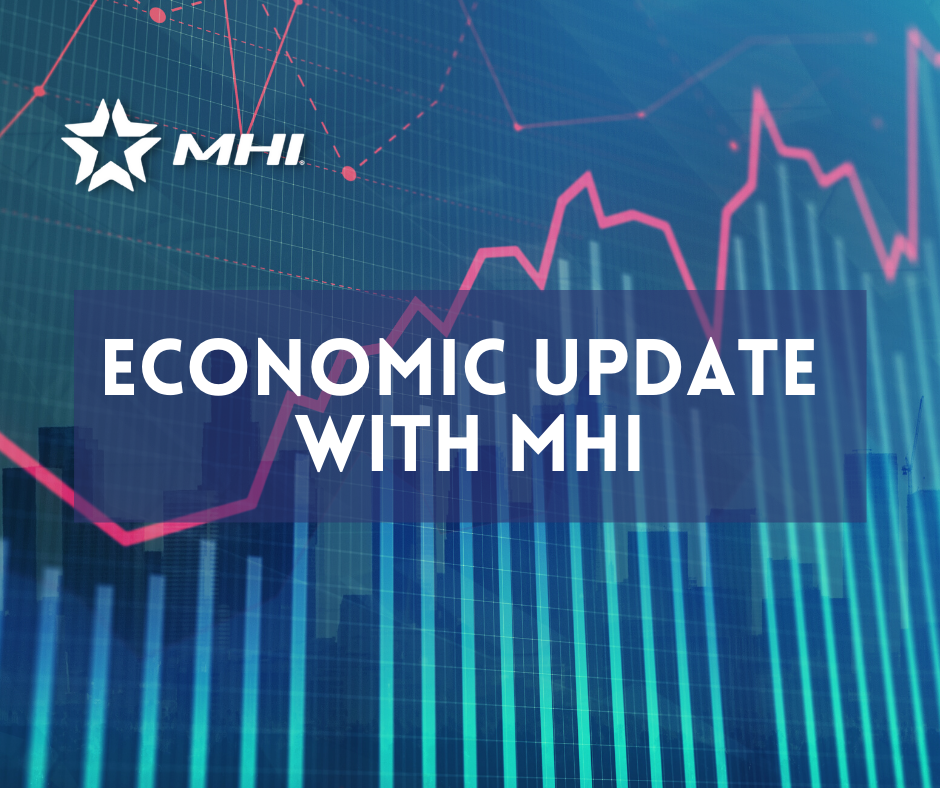Last week, MHI held its annual spring meeting virtually. Several Millwood team members attended the meeting in an effort to maintain a finger on the pulse of the materials handling industry and serve as industry leaders. Their keynote speaker was Jason Schenker, president of Prestige Economics and chairman of the Futurist Institute. His speech was titled, “Policy and Economy: Risks, Hopes, and Hobgoblins” and offered a macro-level overview of the U.S. economy in the wake of the COVID-19 pandemic.
Overall, the U.S. economy is growing. Interest rates are low, which is an advantage in manufacturing and the supply chain. E-commerce has been critical for economic growth with the rise of online shopping, and it is expected to continue expanding. The increase in COVID-19 vaccinations in the U.S. and other countries is leading to a comeback in the travel, tourism and hospitality industries. However, the economy is still facing challenges such as high levels of joblessness, tax increases and competition between global powers.
The hobgoblin in question is inflation, specifically hyperinflation. Inflation has been a major topic of discussion in 2021 for everyone from economic experts to journalists to laypeople. Inflation is higher in 2021 than it was the same time last year, which has some observers on alert. However, inflation is expected to be lower later this year, especially when compared to inflation rates of the prior year, which rose in the later months. The Federal Reserve’s policy is to target 2 percent inflation in the long term; given that the last business cycle saw interest as low as 1.8 percent, a temporary increase in inflation is not dangerous in the long term, as it will balance out closer to the Fed’s target.
Some media outlets, including business media, have begun using the term “hyperinflation” in reference to the current U.S. economy, which is likely to cause undue uncertainty in certain sectors. Hyperinflation implies a massive loss of value of cash, loss of income for those on pensions or SSI and an irreversible loss of control of the level of inflation. Though inflation is higher this year, the U.S. is not approaching hyperinflation.
On the producer side of the economy, however, companies continue to face challenges. The prices of many materials and commodities are rising as consumer demand rises. Metals and lumber are becoming more expensive, which erodes corporate profits. Freight cost is also currently high due to high demand and constrained supply. Oil prices are also expected to rise this year, which will add additional freight cost to companies.
Competition also poses a geopolitical risk to material handling companies. Countries such as China are increasing their influence on emerging markets, which leaves less of an opportunity for U.S.-based supply chains. On the positive side, interest rates are expected to remain low for the next few years despite inflation concerns, which is good news for the manufacturing sector due to its high sensitivity to interest rates.
The U.S. labor market has also been a concern in recent months. Low-wage jobs were the most affected by the pandemic, as these are often the kinds of jobs that cannot be done remotely. As vaccination rates rise and businesses reopen, labor force participation has begun to increase and is expected to continue to do so for the next several months. However, it could be years before the U.S. is back to its pre-pandemic unemployment rates.
At the same time, competition for educated workers is expected to increase over the next year. Remote work is not likely to return to pre-pandemic levels, and companies who never previously considered remote work will be using it to their advantage to have access to a more geographically-diverse, and therefore larger, labor market.
Though the U.S. is facing economic challenges along with the rest of the world, the economy is strong and continues to grow. Manufacturing, material handling and supply chains are doing well and are likely to stay on trend as the year continues.






